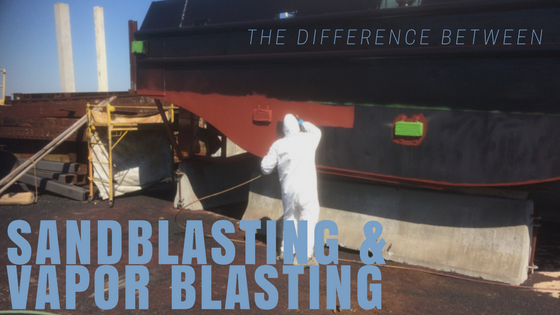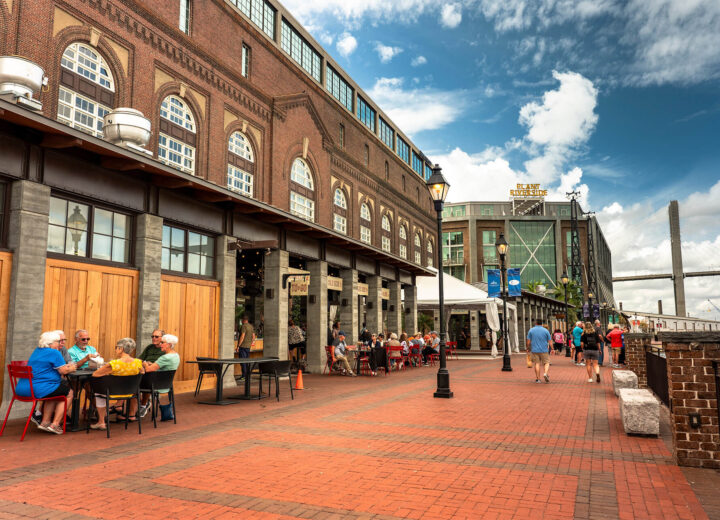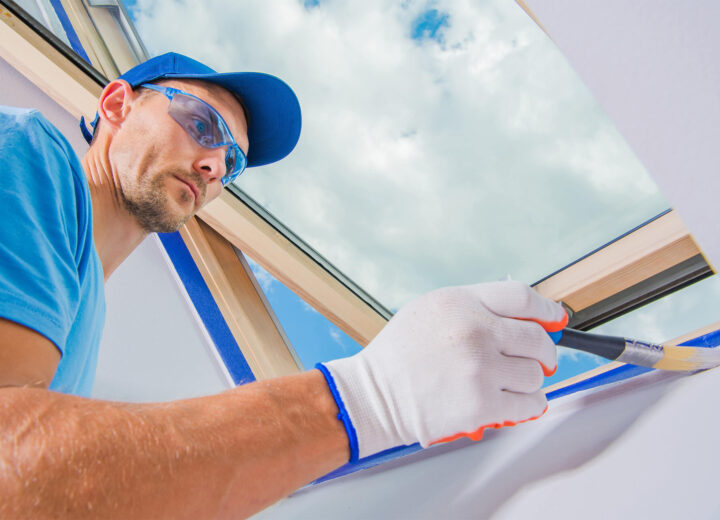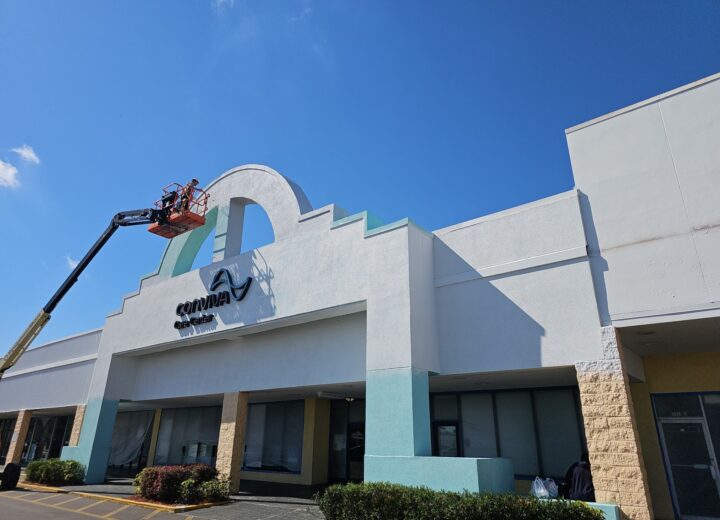
Wet blasting and dry blasting define two methods of surface preparation. The selection of the preparation technique will depend on the substrate material, its overall condition, the level of prep required, and the type of coating specified.
To find out why one method is preferred over the other in certain situations, let’s take a close look at the differences between sandblasting and vapor blasting.
Sandblasting
Sandblasting, also referred to as abrasive blasting, is a heavy-duty surface prep method that involves using pressurized air to forcibly propel sand particles or other abrasive materials toward surfaces. In addition to removing old paint, dirt, contaminants, rust, and corrosion, sandblasting creates a new surface profile that improves adhesion between the substrate and the new coat of paint. As a result, the protective coatings will last longer.
Prior to sandblasting, it is critical to accurately calibrate the blasting equipment and select the correct blasting media for each application. Blasting media is divided into hard abrasives, such as aluminum oxide, silicon carbide, glass beads, steel grit and steel shot, and soft abrasives, like plastic beads, walnut shells and baking soda.
While hard abrasives are used to prepare steel and other hard metal alloys, soft abrasives are more suitable for removing old paint, dirt, and contaminants from both soft and hard metals, as well as substrates made of fiberglass, rubber, plastic, composites, or wood. As an example, soft abrasives can safely remove debris, fouling, old paint, rust and corrosion from industrial equipment, such as storage tanks, silos, and machinery, without damaging the substrate.
Although sandblasting delivers a very efficient surface prep method, it often requires large quantities of blasting media and produces large amounts of dust. Depending on the specifics of each paint job, sandblasting operations can significantly increase the overall cost of an industrial painting project and contribute to more waste that needs to be disposed of.
Furthermore, careful consideration must be given to safety. The industrial painters who perform sandblasting operations should wear adequate PPE that includes respirators and ear protection. Also, proper dust collection systems are essential in enclosed area in order to prevent fires due to dust accumulation.
Vapor Blasting
Vapor blasting is a non-aggressive surface prep technique that has been specifically developed for applications requiring finer finishes. Combining a thin film of water with fine blasting media, this technique can remove dirt, contaminants, rust, corrosion, and old paint from a wide range of surfaces.
Because the stream of water and the blasting media have a gentle cleaning effect even on delicate surfaces, vapor blasting reduces the degree of surface deformation and provides a high-quality finish. The water also acts as a flushing agent that prevents the accumulation of blasting media on the surface being prepared.
Compared to sandblasting, vapor blasting reduces abrasive consumption. Thus, it delivers a more cost-effective surface prep option. Additionally, the thin film of water significantly lowers dust emissions, suppressing the ambient dust. This minimizes the impact of vapor blasting operations on any adjoining activities that might be carried out simultaneously.
Because vapor blasting offers an environmentally friendly method of providing contaminant-free surfaces and uses limited amounts of water, it has become the go-to choice for many painting projects.
Coming down to safety, vapor blasting can be carried out both in open and enclosed spaces with minimal PPE requirements. As well, it eliminates the risk of dust fires.
One of the drawbacks of vapor blasting is that it can accelerate the corrosion process. Although both sandblasting and vapor blasting can cause corrosion problems, the metal surfaces prepared by vapor blasting tend to corrode faster. To slow down the corrosion process, a corrosion-inhibiting primer should be applied as soon as the surface has dried out.
Containment of blast media can also be challenging. Depending on the structures being prepared by vapor blasting, it can be difficult to retain the water with all the residual blasting media.
By considering the requirements of industrial painting projects and preparation standards for various surfaces, our industrial painting contractors are able to recommend the most appropriate surface prep method and blasting media for each application. If you have additional questions about the surface preparation techniques we use at Performance Painting Contractors, please contact one of our offices to get all of your questions answered!






